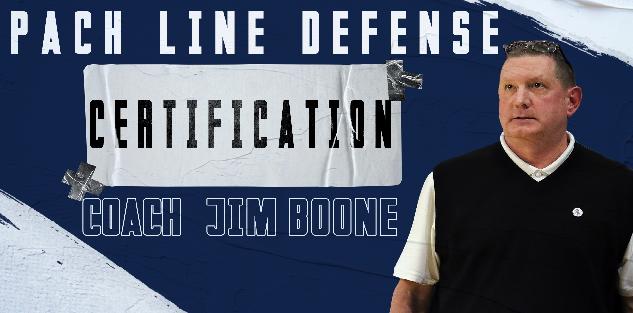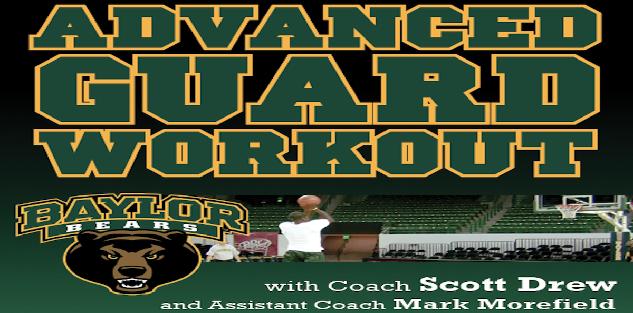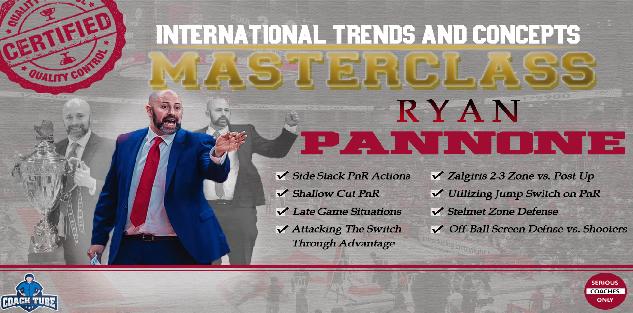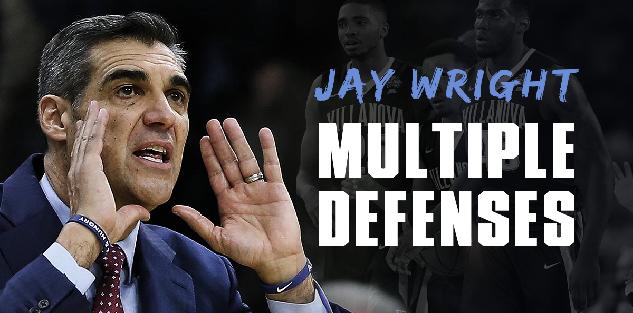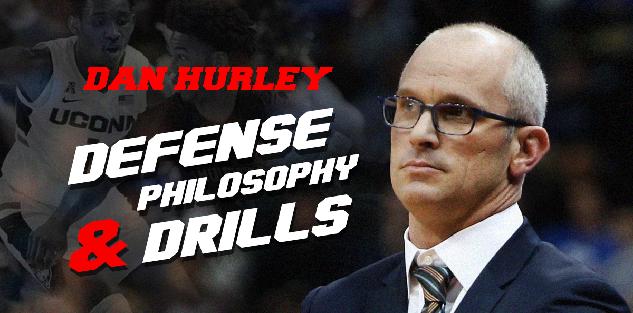Featured courses
- Two Great Game Situational Workouts For the Basketball Offseason by Grant Young
- Two Reads Basketball Players Must Understand Before Executing the Ball-Screen by Grant Young
- Two of LSU Coach Kim Mulkey’s Game-Winning Inbounds Plays by Grant Young
- Three Effective Early-Season Defensive Basketball Drills by Grant Young
- Four Essential Tips For Basketball’s 1-3-1 Zone Defense by Grant Young
- Four Zone Defense Drills to Strengthen Your Team by Grant Young
- How to Beat the Three Most Common Pick and Roll Coverages by Grant Young
- Two Drills to Improve Shooting at the Start of the Basketball Season by Grant Young
- Core Basketball Principles That Dallas Mavericks Coach Sean Sweeney Teaches by Grant Young
- Three Competitive Shooting Drills For Your Basketball Team by Grant Young
- How To Teach The ‘I’ Generation of Basketball Players by Grant Young
- Three Elite Drills to Begin a Basketball Practice With by Grant Young
- How to Build a Championship-Winning Basketball Team Culture by Grant Young
- Two of Texas Women’s Basketball Coach Vic Schaefer’s Tips For Team Culture by Grant Young
- Atlanta Dream WNBA Coach Brandi Poole’s Four Sets for Secondary Offense by Grant Young
- NC State Basketball Coach Brett Nelson’s 4 Crucial Point Guard Qualities by Grant Young
- Kentucky Coach Mark Pope’s Five Guard Rules For Offense by Grant Young
- McNeese State Basketball Coach Will Wade’s 4 Core Pillars by Grant Young
- 4 Tips To Instantly Improve Your Free Throw Shooting by Tyler Linderman
- Assemble a Championship-Caliber Basketball Rotation by Brandon Ogle
- Two of UConn Coach Dan Hurley’s Key Defensive Drills by Grant Young
- Four Post Moves All Basketball Forwards Should Have In Their Bag by Grant Young
- Four of Baylor Coach Nicki Collen’s Midseason Pick and Roll Adjustments by Grant Young
- WNBA Legend Sue Bird’s Two Tips For Attacking on Offense by Grant Young
- Houston Coach Kelvin Sampson’s Three Keys for Building a Basketball Program by Grant Young
- Two of Tom Izzo’s Top Michigan State Defensive Drills by Grant Young
- Four of Olympic Gold Medalist Coach Mechelle Freeman’s Relay Race Strategies by Grant Young
- Three Key Strategies Will Wade Uses to Build a Dominant Team by William Markey
- Five UConn Huskies Men’s Basketball Plays That You Can Use by Grant Young
- Three Tips for Maintaining Team Culture at the End of a Basketball Season by Grant Young
- Three Dribble Drive Motion Drills to Teach Your Basketball Team by Grant Young
- Three Dribbling Drills For Non-Primary Ball Handlers by Grant Young
- Four Advanced Ball Handling Drills For Basketball Guards by Grant Young
- Three Tips to Sharpen Your Post Player’s Footwork in Basketball by Grant Young
- These Three Pick and Roll Drills Are Crucial For Any Ball Screen Offense by Grant Young
- Three Closeout Drills to Improve Basketball Shooting Defense by Grant Young
- Three Tips to Perfect the Packline Defense in Basketball by Grant Young
- Four Keys to Executing the Read and React Offense in Basketball by Grant Young
- Three Tips to Develop Elite Basketball Shooters by Grant Young
- Three Crucial Keys to Executing the 5 Out Offense in Basketball by Grant Young
- These Three Offensive Sets Will Help You Beat Any Zone Defense by Grant Young
- Three Transition Basketball Drills To Play With More Pace by Grant Young
- Three 5 Out Offense Drills Any Basketball Coach Can Use by Grant Young
- Four Vital Techniques for a Motion Offense in Basketball by Grant Young
- Three Baseline Inbounds Plays To Win Your Basketball Team Games by Grant Young
- Four Drills For Sharpening the European Ball Screen Offense by Grant Young
- Three Positioning Tricks For a Basketball Zone Offense by Grant Young
- Three Rules to Perfecting Basketball's Lock Left Defensive System by Grant Young
- UCLA WBB Coach Cori Close’s Two Keys to Winning the Mental Game by Grant Young
- Four of Alabama Coach Nate Oats’ Favorite Basketball Drills by Grant Young
- Three Ways To Turn Transition Offense in Basketball Into Points by Grant Young
- Three Drills to Master Basketball's Pack Line Defense by Grant Young
- Three Transition Defense Drills to Halt Fast Breaks by Grant Young
- Four Offensive Rebounding Drills to Win Second Possessions by Grant Young
- 4 Defensive Technique Drills from Boston Celtics Assistant Coach Brandon Bailey by Marek Hulva
- 5 Drills to Improve Ball Handling by Tyler Linderman
- 13 FUNNY BASKETBALL GIFS by Alex
- BASKETBALL SPEED AND AGILITY: 8 QUESTIONS FOR COACHTUBE EXPERT RICH STONER by Jaycob Ammerman
- Defensive Strategies for Basketball by Ryan Brennan
- 4 Keys To Turning Your Program Into Championship Contender By Dallas Mavericks Coach Sean Sweeney by Marek Hulva
- 5 Components to Creating a Winning Basketball Program by Justin Tran
- Guide to Becoming a Lethal Scorer in Basketball by Justin Tran
- Zone Defense In the NBA Eastern Conference Finals by James Locke
- Mastering Court Mobility: Tips for Effective Movement in Basketball by Justin Tran
- 5 Basketball Shooting Drills: How to Develop a Sharpshooter by James Locke
- 6 Points of Emphasis for a Successful 5 Out Offense by Jaycob Ammerman
- Effective and Efficient Methods to Practice During the Basketball Season by Justin Tran
- Three Great Passing Drills From a Basketball Coaching Legend by Grant Young
- 7 Principles For Perfecting the Princeton Offense in Basketball by Grant Young
- How to Replicate A Modern NBA Offense by Grant Young
- Three Great Two-Ball Dribbling Drills For Basketball Development by Grant Young
- Two Rebounding Drills to Win Your Basketball Team Championships by Grant Young
- How to Improve Your Basketball Team’s Defense With the Shell Drill by Grant Young
- How Baylor Basketball’s Scott Drew Develops Elite Guard Play by Grant Young
- Off-Ball Movement Tips and Strategies: Lessons From the NBA Finals by James Locke
- Player Development: Scott Drew’s Tips for Producing NBA Guards by James Locke
- How to Execute a Spread Offense in Basketball by Grant Young
- Four Quality Quotes From Four Final Four Coaches by Grant Young
- A Guide to the Pack Line Defense by Alex Martinez
- 3 Defensive Build Up Drills to Improve Team Basketball Defense by Grant Young
- Battle of Two Great Coaches: Best Plays from the NBA Finals Contenders by Justin Tran
- 10 Creative Ways Athletic Programs Can Use a Video Board to Raise Money by Coach Williams
- How to Use 3 on 3 to Improve Your Basketball Team by Grant Young
- How to Defend the Pick and Roll by Grant Young
- Mastering Basketball Defense: Techniques, Drills, and Strategies for Success by Justin Tran
- Three Tips From The Coach Who Developed Giannis Antetokoumnpo by Grant Young
- 2023 NBA Draft: Skills and Technique from Top Prospects by Justin Tran
- From College to the Pros: Transitioning the Dribble Drive Offense by Justin Tran
- Positionless Basketball: Redefining Roles on the Court by Justin Tran
- Revolutionize Your Offense: Proven Concepts to Elevate Your Basketball Game by Justin Tran
- 5 Essential Fastbreak Drills Every Basketball Coach Should Know by James Locke
- How to Run a Circle Offense in Basketball by Grant Young
- Game-Changing Strategies: ATO Plays in the EuroLeague and Olympics by Justin Tran
- How to Stand Out at Basketball Tryouts by Grant Young
- How to Improve Your Basketball Team’s Transition Defense by Grant Young
- Indiana Fever GM Lin Dunn’s Two Keys For Women’s Basketball Coaches by Grant Young
- Strength Training Strategies Every Basketball Player Should Have by Grant Young
- A WNBA Basketball Coach’s Four Priorities In Transition Defense by Grant Young
- Three Adjustments to Make When Your Basketball Offense Isn’t Working by Grant Young
- Three Pillars to Applying Defensive Pressure on the Basketball Court by Grant Young

Three Rules to Perfecting Basketball's Lock Left Defensive System
- By Grant Young
The lock left defense has been one of the best ways for basketball coaches to nullify elite offensive opponents in the modern game.
For those who don’t know the Lock left basketball defense is a strategic approach designed to stifle an opponent's offensive plays by forcing them toward a specific direction—namely, to the left side of the court. This technique is particularly effective when defending against right-handed players, who are generally more comfortable driving and shooting from their dominant side.
In essence, the lock left defense requires defenders to position themselves in such a way that they channel their opponents towards the left. This involves not only physical positioning but also keen awareness of the offensive player’s tendencies and skills. By anticipating moves and cutting off lanes, defenders can significantly disrupt an opponent's rhythm and limit scoring opportunities.
Implementing lock left defense can elevate your team’s overall defensive strategy. It encourages cohesive teamwork, as players must communicate effectively to ensure that everyone is on the same page regarding assignments and rotations, which can create turnovers and fast-break opportunities for your team.
Incorporating lock left defense into your team strategy will not only sharpen individual skills but also enhance team dynamics. And Tyler Coston can help you turn the lock left defense into a championship-winning strategy you can employ with ease.
Coach Coston is the Founder of Savi Coaching and the developer of the Lock Left Defensive System and Race & Space Offensive System. He is known as a thought leader in player development, curriculum creation, and teaching methodology. Tyler spent the last 13 years providing leadership as Director of Basketball Development for PGC Basketball.
In a recent clinic Coach Coston gave as part of the 2023 Bob Jones University Bruins Coaching Clinic held in Greenville, SC, he discussed player responsibilities for the Lock Left Defense, defensive rotations, build-up drills, and team drills.
Rule 1: Do Not Help One Pass Away
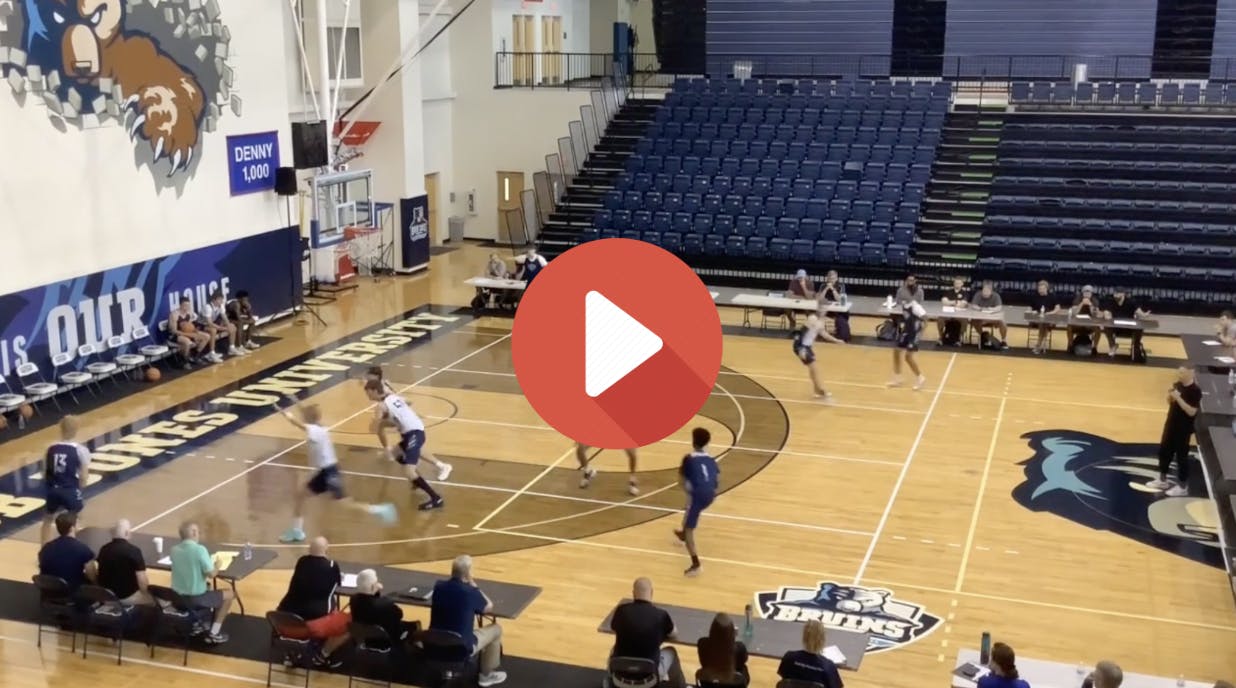
Coach Coston explains that the first aspect of executing the lock left defense is locking the ball.
“How are we going to identify the threat early, pick up the ball early, shift it to one side of the floor, and then keep it on that side of the floor? How can we enter a little bit of doubt, a little of chaos into the mind of the opponent by them not knowing what it is?” Coach Coston asks.
A drill Coach Coston uses to instill this chaos is what he calls “Lock 2 v 2”. The goal of this drill is to work on the relationship between the ball and the gap.
One player will start at around half-court with the ball while their offensive teammate will be on the ball-side corner. A defender will be guarding the ball handler around the three-point line while the second defender is around the free-throw line.
Coach Colson explains that in the lock left defense, “We do not help one pass away”. Instead, the defense “skirmishes or scrams”.
This means that the second defender isn’t really going to be helping with a potential drive, but rather looking to cut into the passing lane to steal the pass from the ball handler to their teammate in the corner.
Because the lock left defense is forcing the ball handler to their left, that means they have limited options aside from passing it to the corner player when forced this way in the drill. This should make it relatively easy for the second defender to intercept a pass.
However, they also need to be aware that they’re aggressiveness could make them susceptible to a back cut. Yet, this isn’t the worst thing in the world because, in a real game, there would be another defender in the post ready to defend a successful back cut.
Rule 2: Switching Everything
Another crucial rule for executing the lock left defensive system is that players will be switching everything on the court.
What happens a lot when the ball is relegated to the left side of the floor is that a lot of little dribbles, hand-offs, and short-range pass exchanges occur, because creativity and playmaking are stymied when players are forced to operate with their weak hands in a small section of the court.
And because the goal is to keep players pinned down on this side, defenders must be switching at every opportunity so as to not let the offense recover and move the ball back around the key or into the paint.
A drill to emphasize this starts with four defensive players (three guarding players with one protecting the paint) and three offensive players. The defender on the ball is supposed to get beat. Once they do, the next closest defensive player is supposed to “scram” in front of that player to stop their attack while the defender who got beat will chase over to the passing lane that their defender just vacated.
Rule 3: If You’re Off the Ball, You’re Back to the Ball
Coach Coston explains that one of the most controversial aspects of the lock left defensive system is that off-ball defenders are supposed to play with their back to the ball, rather than their chest to the ball.
“Old school is that we want to deter the pass, new school is that we want to steal the pass,” he says.
The key point to making sure this works is that the player should still be able to see their defender in their periphery, and they must remain below the three-point line if their defender is along the wing, so that they have enough time to react to any screens or cuts headed their way while they’re looking to secure a steal.
All of these lessons and more are available in Coach Coston’s ‘Lock Left Defensive System’ course, which provides all you need to know about perfecting the lock left defense.

